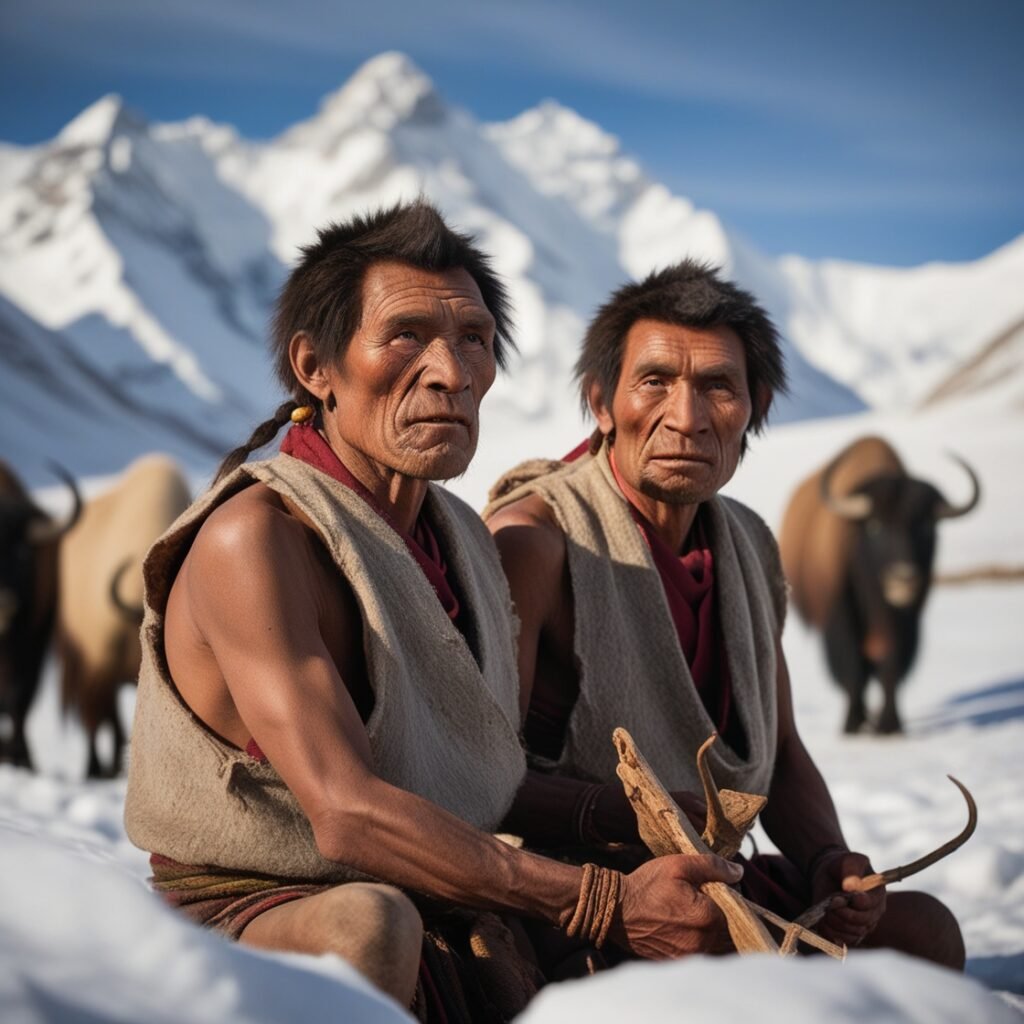Recent discoveries have shed light on the Denisovans, an ancient group of humans closely related to Neanderthals. New evidence suggests that they not only ventured into the high altitudes of the Tibetan Plateau but thrived there for a significant period.

Denisovans Beyond Siberia
Traditionally, researchers believed that Denisovans inhabited Siberia. However, a groundbreaking analysis of animal bones from Baishiya Karst Cave in China revealed their presence on the Tibetan Plateau between 48,000 and 32,000 years ago. This discovery challenges previous assumptions about their geographic range and adaptability.
Thriving in Harsh Conditions
The Tibetan Plateau, with its thin air and extreme cold, presents a challenging environment for most hominins. Yet, Denisovans appear to have adapted well to these harsh conditions, possibly developing unique strategies to survive. Their ability to thrive in such an environment adds a new layer of complexity to our understanding of Denisovan adaptability.
Insights from Baishiya Karst Cave
Baishiya Karst Cave, located on the northeastern edge of the Tibetan Plateau, is one of only two known Denisovan sites in the world. The findings from this site offer fascinating glimpses into the Denisovan way of life:
Skilled Hunters and Resourceful Consumers
Analysis of animal bones from Baishiya Karst Cave indicates that Denisovans were skilled hunters. They preyed on blue sheep, wild yaks, equids, woolly rhinos, and even spotted hyenas. Markings on the bones suggest that they efficiently processed meat and marrow, demonstrating a thorough understanding of resource utilization.
Tool Crafters
Some recovered bone fragments show signs of being fashioned into tools, hinting at a developed tool culture among the Denisovans. This suggests they possessed advanced skills in tool-making, which likely aided their survival in the harsh environment.
High-Altitude Adaptation
The presence of Denisovans at over 3,000 meters altitude points to significant adaptations for dealing with thin air and freezing. While direct evidence of these adaptations is still lacking, their ability to survive and thrive at such altitudes speaks volumes about their resilience.
A Glimpse into Their Environment
Imagine a frigid landscape, swept by strong winds and bathed in intense sunlight. Denisovans likely wore warm clothing made from animal skins to cope with the cold. Their diet was rich in protein from hunted animals, possibly supplemented by wild plants and berries. They may have found shelter in caves or built rudimentary structures with available materials.
Coexisting with Diverse Fauna
Denisovans shared their environment with a variety of animals:
- Large Herbivores: Woolly rhinos and ancient yaks roamed the area, providing both challenge and bounty for Denisovan hunters.
- Smaller Prey: Equids like wild horses or asses, blue sheep, and small mammals like marmots added variety to their diet.
- Carnivores: Spotted hyenas, while competitors for prey, also posed a potential threat to Denisovans.
This diverse fauna paints a picture of a dynamic ecosystem where Denisovans played a vital role as apex predators.

Conclusion
The discovery of Denisovans on the Tibetan Plateau reveals their remarkable adaptability and resilience. They thrived in one of the most challenging environments on Earth, showcasing their advanced survival skills. As ongoing research continues to uncover more about their way of life, we gain a deeper understanding of these enigmatic ancient humans and their significant place in our evolutionary history.

